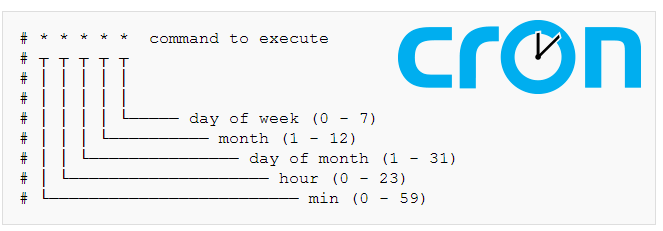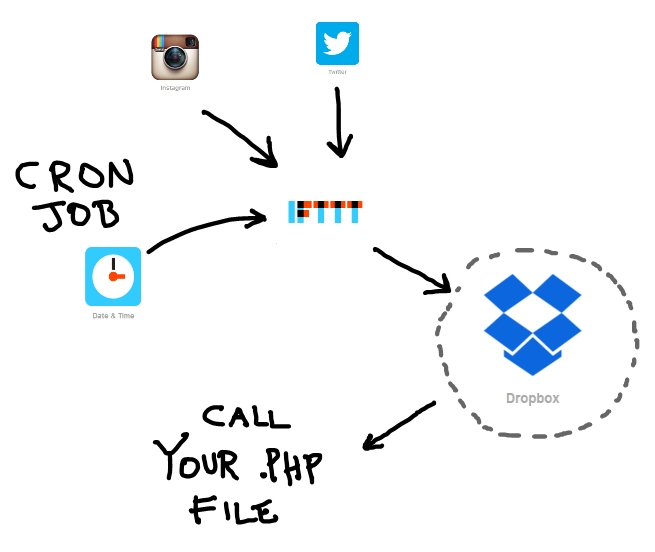Cron Jobs in Linux: A Beginner’s Step-by-Step Guide
Cron Jobs in Linux are scheduled tasks that run automatically at specific times or intervals. They help automate system maintenance or repetitive commands. Beginners can set up Cron Jobs using the crontab command.
🤖AI Overview:
Cron Jobs in Linux are automated tasks scheduled to run at specific times or intervals using the cron service. The main purpose of cron jobs is to perform repetitive tasks like backups, updates, or monitoring without manual intervention. Setting up a cron job helps ensure that essential system tasks are consistently executed as planned. This automation improves efficiency and reliability in managing Linux systems.
Cron Jobs In Linux Syntax Explanation
Tasks that need to be scheduled are saved in a file called CronTab. CronTab is a text file that contains a command with a format that Cron understands. Each of the commands in this file is called Cron Job.

A crawler always contains four columns, each representing a time that ultimately leads to a path or command to execute.
Each of the columns represents:
- Minutes: 0 mins
- Hours: Hours [0-6]
- Days: Day [0-7]
- Months: Month [0-7]
- Days of the Week: Days of the Week [1-5]
1 Minutes [0-59]
2 | Hours [0-23]
3 | | Days [1-31]
4 | | | Months [1-12]
5 | | | | Days of the Week [Numeric, 0-6]
6 | | | | |
7 * * * * * home / path / to / command / the_command.shFor example, if you want to set the timing for 1 pm on the first day of every month, you’ll have something like the following:
1 0 0 1 * * home / path / to / command / the_command.shIf you plan to set the timing for every Saturday at 8:30 pm:
1 30 8 * * 6 home / path / to / command / the_command.shThere are also other options that you can use in scheduling
The comma (,) to construct a list of values from each krone column
Dash (-) to specify the range of values
Stars (*) to specify the value of all
cronTab sends a notification email to the executed task by default. In some circumstances, we do not need to send this email to move the output to / dev/null. This output transfer is done with Operator>.
1 30 8 * * 6 home / path / to / command / the_command.sh> / dev/nullIf you plan to move the Errors to Divisional Null, you can also use this command.
1 30 8 * * 6 home/path/to/command/the_command.sh >/dev/null 2>&1Outline of Cron Job Training in PHP
To manage cronTab in PHP, we need to execute a shell command on the server to edit the CronTab file. This feature is usually available on a few shared servers, and on dedicated and virtual servers, you can easily use it.
Use PHP With The SSH2 Library.
To get started, we wrote a class on Cron Job training in PHP, which outlines its structure below.
We have defined the following four properties at first:
$ connection: Our database connection / connection output source
$ path: the file path
$ handle: Our temporary crown file name
$ cron_file: Complete file path and crawler filenameOur class must connect and authenticate to execute commands and have access to the user’s CronTab. So we establish an SSH2 connection inside the constructor and authenticate.
To execute commands, we need to use the exec () method.
Then, we’ll need to write on the cronTab file. We also need a way to delete this file when it’s done. To do this, we define write_to_file () and remove_file ().
Of course, we need a way to create and delete Cron jobs. So we create the append_cronjob () and remove_cornjob () methods, respectively.
To remove all CronTabs, we need to use the remove_crontab () method to manage this operation.
Finally, we need two helper methods: the first method, which returns a boolean value, checks for a temporary Cron file. The next method is used to display bugs. The method names will be crontab_file_exists () and error_message (), respectively.
The following is a general class for our work on Cron Job training in PHP:
1 <? PHP
2
3 Class Ssh2_crontab_manager {
4
5 private $connection;
6 private $path;
7 private $handle;
8 private $cron_file;
9
10 function __construct () {...}
11
12 public function exec () {...}
13
14 public function write_to_file () {...}
15
16 public function remove_file () {...}
17
18 public function append_cronjob () {...}
19
20 public function remove_cronjob () {...}
21
22 public function remove_crontab () {...}
23
24 private function crontab_file_exists () {...}
25
26 private function error_message () {...}
27
28 }Run A Cron Job Training Class In PHP
To begin with, we first create an instance of our class. We need to pass the constructor class IP address, port, username, and password first.
1 $crontab = new Ssh2_crontab_manager ('5.5.22.33', '22', 'my_username', 'my_password');Adding A Cron Jobs In Linux
With an authentication connection, we can build a new crawler.
1 $crontab = new Ssh2_crontab_manager ('5.5.22.33', '22', 'my_username', 'my_password');
2 $crontab-> append_cronjob ('30 8 * * 6 home / path / to / command / the_command.sh> / dev / null 2> & 1 ');Adding An Array Of Cron Jobs In Linux
Adding several Cron jobs is simply adding a Cron job. We can refer to the array of Job Crawls as the apeend_cronjob () method.
1 $crontab = new Ssh2_crontab_manager ('5.5.22.33', '22', 'my_username', 'my_password');
2
3 $new_cronjobs = array (
4 '0 0 1 * * home / path / to / command / the_command.sh',
5 '30 8 * * 6 home / path / to / command / the_command.sh> / dev / null 2> & 1 '
6 );
7
8 $crontab-> append_cronjob ($new_cronjobs);Delete A Cron Jobs In Linux
Here you use Regular Expression to find and remove a single crawler. However, depending on the crawler you want to find and delete, by month, your regex expression will be different.
1 $crontab = new Ssh2_crontab_manager ('5.5.22.33', '22', 'my_username', 'my_password');
2
3 $cron_regex = '/home\/path\/to\/command\/the_command\.sh\/';
4
5 $crontab-> remove_cronjob ($cron_regex);Removing An Array Of Cron Jobs In Linux
As with deleting a Cron job, we use regex here, each of which we place in an array house, and finally run the remove_cronjob method.
1 $crontab = new Ssh2_crontab_manager ('5.5.22.33', '22', 'my_username', 'my_password');
2
3 $cron_regex = array (
4 '/ 0 0 1 \ * \ * /',
5 '/home\/path\/to\/command\/the_command\.sh\/'
6 );
7
8 $crontab-> remove_cronjob ($cron_regex);Conclusion
Learning how to manage Cron Jobs in Linux is a valuable skill. Automating tasks helps you keep your system running smoothly and saves important time. By following these simple steps and best practices, you can use Cron Jobs in Linux even as a beginner.
If you need more assistance with Cron Jobs in Linux or have any questions, feel free to ask. Here at OperaVPS, we are always happy to help you achieve your goals in Linux system administration.
FAQ
2. How can I create a new Cron Job in Linux as a beginner?
To create a new Cron Job, beginners can use the crontab command. Run "crontab -e" in your terminal to open your personal cron table, then add a new line with the time schedule followed by the command you want to automate.
3. What is the correct syntax for scheduling Cron Jobs in Linux?
The basic syntax for scheduling a Cron Job includes five fields for minute, hour, day of month, month, and day of week, followed by the command to run. For example, "0 5 * * * /path/to/command" runs the job every day at 5:00 AM.
4. How can I view and manage my existing Cron Jobs in Linux?
You can view your current Cron Jobs by running "crontab -l" in your terminal. To remove all Cron Jobs for your user, use "crontab -r". Editing is done with "crontab -e".
5. What are some common examples of Cron Jobs in Linux?
Common Cron Jobs include running backups, updating system packages, deleting temporary files, and sending automatic email reports. These routine tasks help maintain system health and save time.
6. How do I troubleshoot errors with my Cron Jobs in Linux?
If a Cron Job does not work as expected, check the output or error logs, often found in your system's mail or log files. It is also important to make sure the command in your Cron Job includes complete file paths.
7. Are there any security considerations when using Cron Jobs in Linux?
Yes, it is important to set secure permissions on your scripts and avoid running Cron Jobs with unnecessary administrative rights. Only trusted users should have access to create or modify cron entries.
8. Can I schedule Cron Jobs to run scripts written in different programming languages?
You can schedule Cron Jobs to run any executable file or script, including those written in Bash, Python, Perl, or PHP. Make sure your script has the correct permissions and includes the appropriate interpreter at the top, such as "#!/bin/bash" for Bash scripts.
9. What happens if my computer is off when a Cron Job is scheduled to run?
Cron Jobs only run when the system is on and the cron service is active. If your computer is off during the scheduled time, the job will not run unless you use a tool like anacron to handle missed jobs.
10. Is it possible to automate Cron Job notifications in Linux?
Automated notifications for Cron Jobs can be set up by directing output to an email address using MAILTO in the crontab file or by redirecting the output to a log file for review. This helps monitor the success or failure of scheduled tasks.
